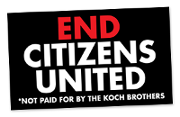Biblio
(2001). Jack: Straight from the Gut.
"In those days, I was throwing hand grenades, trying to blow up traditions and rituals that I felt held us back." (p. 97)
(2005). Winning.
"The belief is this: every person in the world wants voice and dignity and every person deserves them.
By 'voice,' I mean people want the opportunity to speak their minds and have their ideas, opinions, and feelings heard, regardless of their nationality, gender, age, or culture.
By 'dignity,' I mean people inherently and instinctively want to be respected for their work and effort and individuality." (p. 53)
By 'voice,' I mean people want the opportunity to speak their minds and have their ideas, opinions, and feelings heard, regardless of their nationality, gender, age, or culture.
By 'dignity,' I mean people inherently and instinctively want to be respected for their work and effort and individuality." (p. 53)
(2004). Workplace mobbing in academe : reports from twenty universities.
"Mobbing is like a tornado boiling up during stormy, unsettled, inclement times at work. Such times occur in all workplaces, academic ones not least, and everybody knows the signs: disputed decisions, angry words, bruised egos, and tension in the air. Usually such periods of conflict blow over like a summer storm and things settle down again, leaving minor damage to productivity and human relations, damage repaired in subsequent weeks and months.
People who have lived through a tornado, however, know what meteorologists have determined scientifically, that this is not just a 'bad storm', but a distinct kind of near-total devastation categorically apart. That is what workplace mobbing is: a destructive social process arising out of unsettled relations at work, similar to the storms of everyday conflict but of such force, fury, terror and ruination as to warrant its own name, separate study, and specific safeguards." (p. 2)
People who have lived through a tornado, however, know what meteorologists have determined scientifically, that this is not just a 'bad storm', but a distinct kind of near-total devastation categorically apart. That is what workplace mobbing is: a destructive social process arising out of unsettled relations at work, similar to the storms of everyday conflict but of such force, fury, terror and ruination as to warrant its own name, separate study, and specific safeguards." (p. 2)
(2006). The Envy of Excellence: Administrative Mobbing of High-Achieving Professors.
"The inching-out process is at once structural (affecting the target's social location in the workplace) and psychological (changing the targets conception of self). Structurally, the shift involves the target's increasing absense from social gatherings, and more important, a reduction in the number and importance of positions held in the workplace." (p. 177)
"Far from being merely cognitive, the inching out process encompasses the whole of the target's being. It is a sense of growing ontological apartness from the workplace. When the target is physically near the eliminators, he or she commonly experiences sweating, dizziness, trembling, shortness of breath, dryness of mouth, or heart palpitations—symptoms of stress that usually disappear once away from the workplace." (p. 194)
(2006). The remedy and prevention of mobbing in higher education : two case studies.
"Far from being a slang expression, mobbing is the scientific term Leymann drew from the ethological studies of Nobel Laureate Konrad Lorenz (1967)1, to describe fanatic ganging up of managers and/or co-workers against a targeted worker, subjection of the target to a barrage of hostile communications, humiliations, threats, and tricks, toward the end of driving the target out of his or her job." (p. 2)
- 1. (1966). On Aggression.
(2005). The Pope Versus the Professor: Benedict XVI And the Legitimation of Mobbing.
"Those who have sought a person's removal from respectable company often interpret anything that person does afterward, even survival, as an attempt at revenge. To those who have tried to silence a person, even friendly words in that person's voice come across as spite." (p. 34)
(2005). Winning, losing, moving on : how professionals deal with workplace harassment and mobbing.
(, Ed.).
"In our western culture people are judged by their achievements, their earning power, status directly related to employment, and ability to climb the ladder of success. That is the reason it is especially tragic and emotionally damaging when one is robbed of his achievements without just and rational cause. The individual thus affected tends to lose his spirit, ambition, will to fight—ultimately his identity." (p. 174, Falk and Falk)
(1999). Eliminating Professors: A Guide to the Dismissal Process.
Quoting from a decision by the Supreme Court of Canada:
"A person's employment is an essential component of his or her sense of identity, self-worth, and emotional well-being. Accordingly, any change in a person's employment status is bound to have far-reaching repercussions. The point at which the employment relationship ruptures is the time when the employee is most vulnerable, and hence most in need of protection. When termination is accompanied by acts of bad faith in the manner of the discharge, the results can be especially devastating." (p. 164)
"A person's employment is an essential component of his or her sense of identity, self-worth, and emotional well-being. Accordingly, any change in a person's employment status is bound to have far-reaching repercussions. The point at which the employment relationship ruptures is the time when the employee is most vulnerable, and hence most in need of protection. When termination is accompanied by acts of bad faith in the manner of the discharge, the results can be especially devastating." (p. 164)
(1991). Developing and Training Human Resources in Organizations (2nd Edition).
"Despite its wide use, punishment can have unfortunate side effects. First, there is a high probability that the response will be reduced only when the punishment agent is present....Second, punishment may result in avoidance, hostility, or even counteragression toward the punishing agent." (p. 235)
(1994). Leadership and the New Science: Learning About Organization from an Orderly Universe.
"For many years, the prevailing maxim of management stated: 'Management is getting work done through others.' The important thing was the work; the 'others' were nuisances that needed to be managed into conformity and predictability. Managers have recently been urged to notice that they have people working for them. They have been advised that work gets done by humans like themselves, each with strong desires for recognition and connectedness. The more they (we) feel part of the organization, the more work gets done." (p. 144)
(1997). Incestuous Workplace: Stress and Distress in the Organizational Family.
"'The last act of a dying organization is a thicker rule book.' The need for rules to control staff members marks a dramatic change in mutual respect, loyalty, and the esprit de corps that characterized earlier stages of organizational life." (p. 72)
(2013). An Introduction to the Psychodynamics of Workplace Bullying.
252. Abstract
"For a scapegoat to become a victim, the group dynamics have to change. There needs to be a trigger, for example, an increase in anxiety levels due to a takeover or a restructuring of the organisation. If group members become more concerned about self-survival than about the group, the dynamics fragment. With little, or no, support from colleagues, an already burdened scapegoat would be vulnerable to attacks by group members who cope by projecting their anxieties on to others."
(1996). The Heart Aroused : Poetry and the Preservation of the Soul in Corporate America.
"Corporations, for their part, have been engaged in a willful battle against the very grain of existence. Like the good Dutch boy with his finger in the dike, they have spent enormous amounts of energy putting in place systems that attempt to hold back the shifting, oceanic qualities of existence. The complexity of the world could be accounted for, they fervently hoped, by a simple increase in the thickness of the company manual." (p. 10)
(1956). The Organization Man.
"It is the nature of a new idea to confound current consensus—even the mildly new idea. It might be patently in order, but, unfortunately, the group has a vested interest in its miseries as well as its pleasures, and irrational as this may be, many a member of organization life can recall instances where the group clung to known disadvantages rather than risk the anarchies of change." (p. 440)
(2002). Crossing the Unknown Sea: Work as a Pilgrimage of Identity.
"For real conversation we need a real language. To my mind that is the language not enshrined in business books or manuals but in our great literary traditions. Keats or Wordsworth, Emily Dickinson or Mary Oliver often say more in one line about the invisible structures that make up the average workday than a whole shelf of contemporary business books."
(1995). How to Solve Mathematical Problems.
(1998). Anger Kills: Seventeen Strategies for Controlling the Hostility That Can Harm Your Health.
"By allowing yourself a range of strategies—both asserting and deflecting options—you can balance your twin goals of preventing petty matters from riling you and remain focused on your legitimate rights and those of others. Sometimes you may choose to take a stand for what is right; at other times you may prefer to tune out the situation. Real injustices do exist in the world. The goal in learning to control your hostility is not to become insensitive to all injustices but rather to become more focused and selective." (p. 148)
(2005). The Social Outcast: Ostracism, Social Exclusion, Rejection, and Bullying.
Abstract
"Ostracism threatens:
- our need to belong...
- our need for maintaining high self-esteem, because it carries with it the implicit or explicit accusation that we have done something wrong.
- our need for control over interactions with others, as well as our 'interpretive control' when the reason for our exclusion is ambiguous."
- may threaten our need to maintain our belief in a meaningful existence, because it reminds us of our fragile temporary existence and even our own death.
(2000). Imagine : what America could be in the 21st century : visions of a better future from leading American thinkers.
"People want it all. They feel, quite understandably, that is is their birthright. They want the fast life of converging technology, global roaming, rising opportunities, adrenaline-pumping challenges, and life at Web speed—and they want to spend time with their families and friends, meditate, keep fit, relax, and play. It's not about work/life balance; it's about the complete integration of work and life, a holistic, seamless fit between these two and every other aspect of life. The new-story leader encourages employees to engage their creative juices while they are walking along a beach, or to shop for groceries online while they are at work and not be self-conscious—indeed, to be unaware of the difference. Life is whole, not seperated into two solitudes called 'work' and 'life'. " (p. 129)
(C)2014 CC-BY-NC 3.0, workcreatively.org











 ]
]